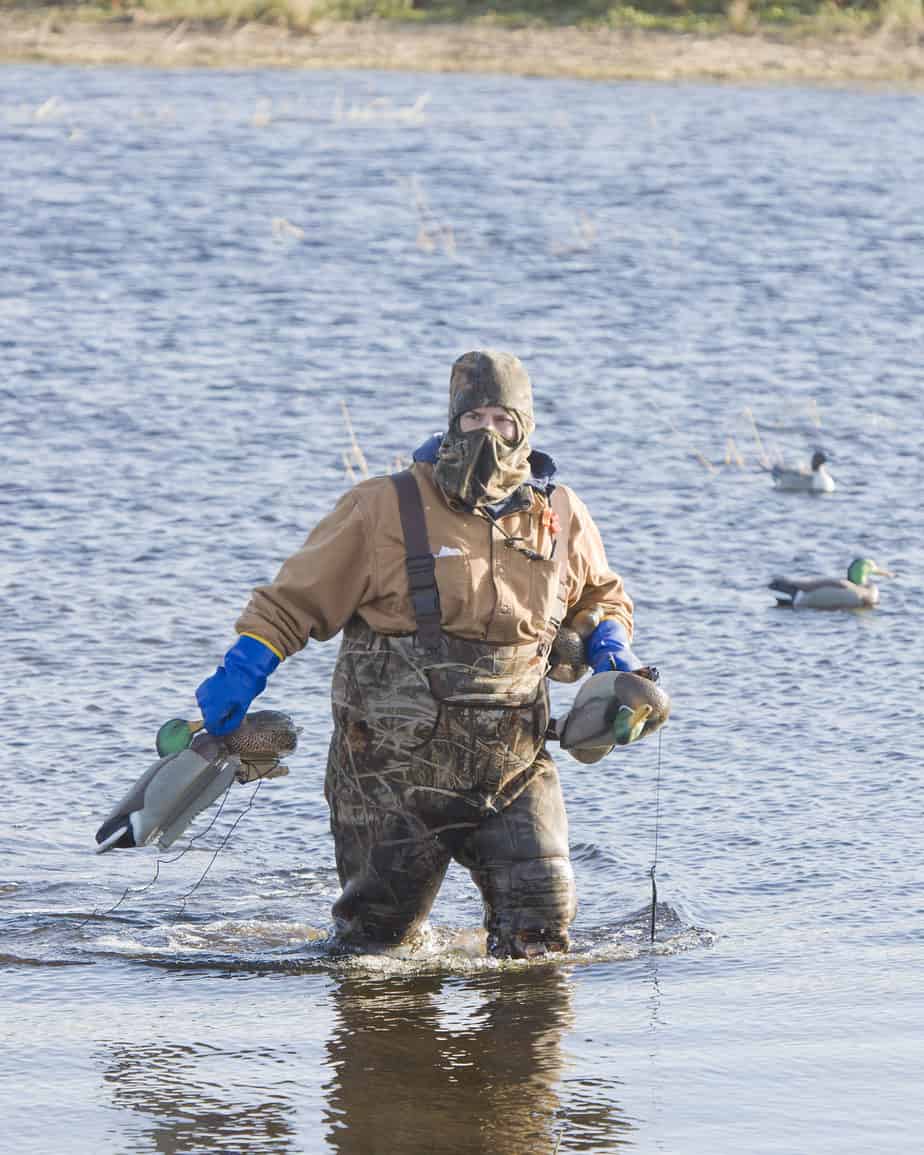You may be more familiar with fishing waders, the waist-high, or even chest-high boot/pant combo that anglers wear.
They protect and insulate you from either standing or running water, allowing you to stay out in the elements for longer, or get a better position in the water.
If you already have a pair of angling waders, there’s a decent chance you can use them for hunting as well.
Hunting waders are very similar to fishing waders in that they are designed to keep you dry while trudging through wet conditions. But, because of the wider range of game and environments, you may encounter while hunting, there are even more options available, like hip waders, chest waders, waist-high waders, and more.
Many of them are also more mobile than fishing waders. Let’s look at some of the options for Hunting Waders.
When Do You Need Hunting Waders?
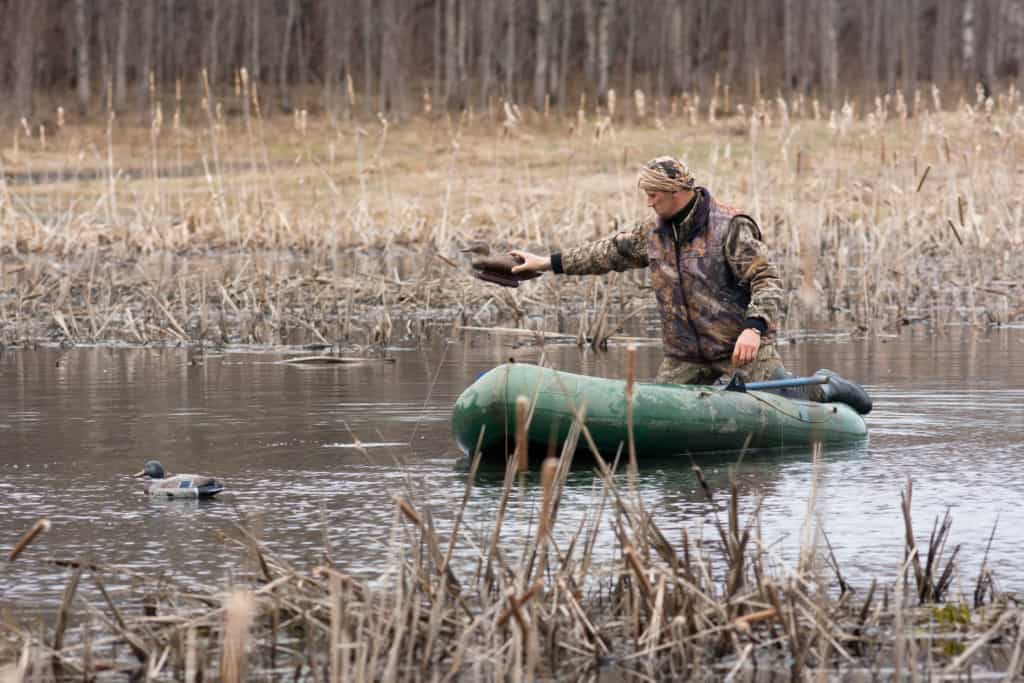
Make no mistake, hunting waders are an incredibly useful part of your hunting outfit. But like many other tools, they’re not always useful and might add weight and noise, or decrease your mobility.
So the question is, when should you wear Hunting Waders?
The main answer is duck hunting. (Technically hunting any waterfowl.) With the duck hunting season straddling the coldest months of the year and taking place in and around rivers, lakes, and marshes, you absolutely need something to keep you warm and dry.
There are other situations where they may be useful as well. The combination of insulation and waterproofing makes them useful for any hunt where you’ll be traversing wetlands or crossing streams during cold weather, or hunting in heavy rain conditions.
But the main reason to buy a pair is for duck hunting.
What Kinds of Hunting Waders Are There?
There are numerous different categories of hunting wader, with each having its own benefits and drawbacks. These categories are determined by the height of the wader, and the way that the boot is attached.
Height Categories
There are three height categories: hip waders, waist-high waders and chest waders. All three of them also fasten differently.
Hip Waders
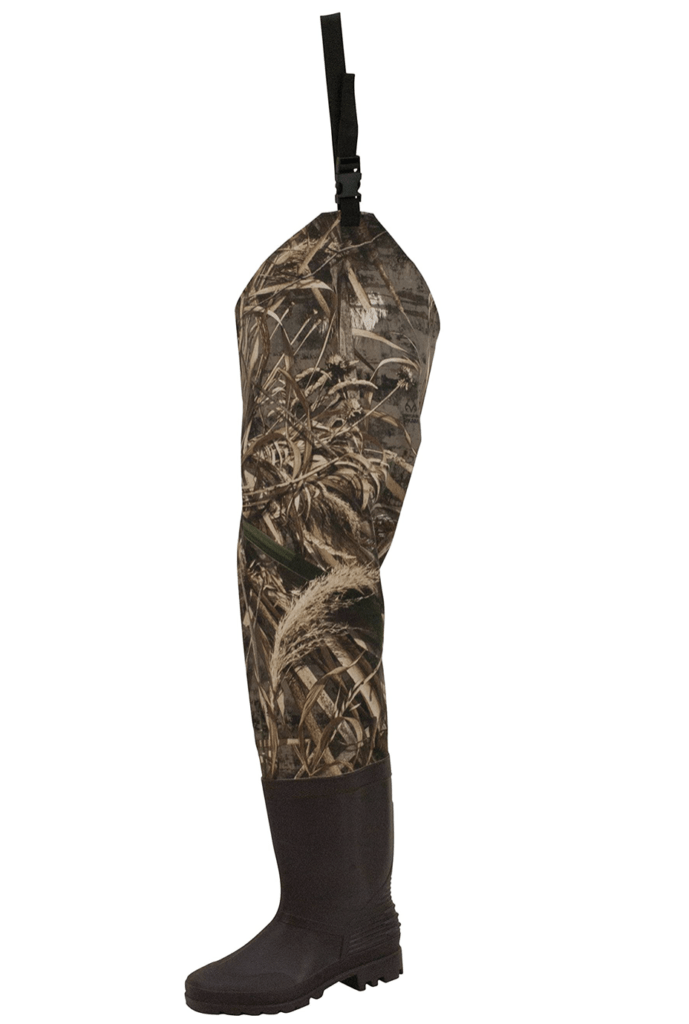
Hip waders are the more versatile option when it comes to waders. Contrary to what the name might suggest, hip waders actually extend to the mid-thigh. The name hip waders comes from the fact that they attach at the hip, typically with a belt loop.
Hip waders allow for greater mobility, and can often be layered more easily. However, they are not as suitable for deep or fast-moving water. Water can easily get in over the top since they are only about pocket-height.
Hip waders are good for hunters who might be traversing wet conditions to get to their hunting grounds, or who only hunt in shallow streams or creeks.
Chest Waders
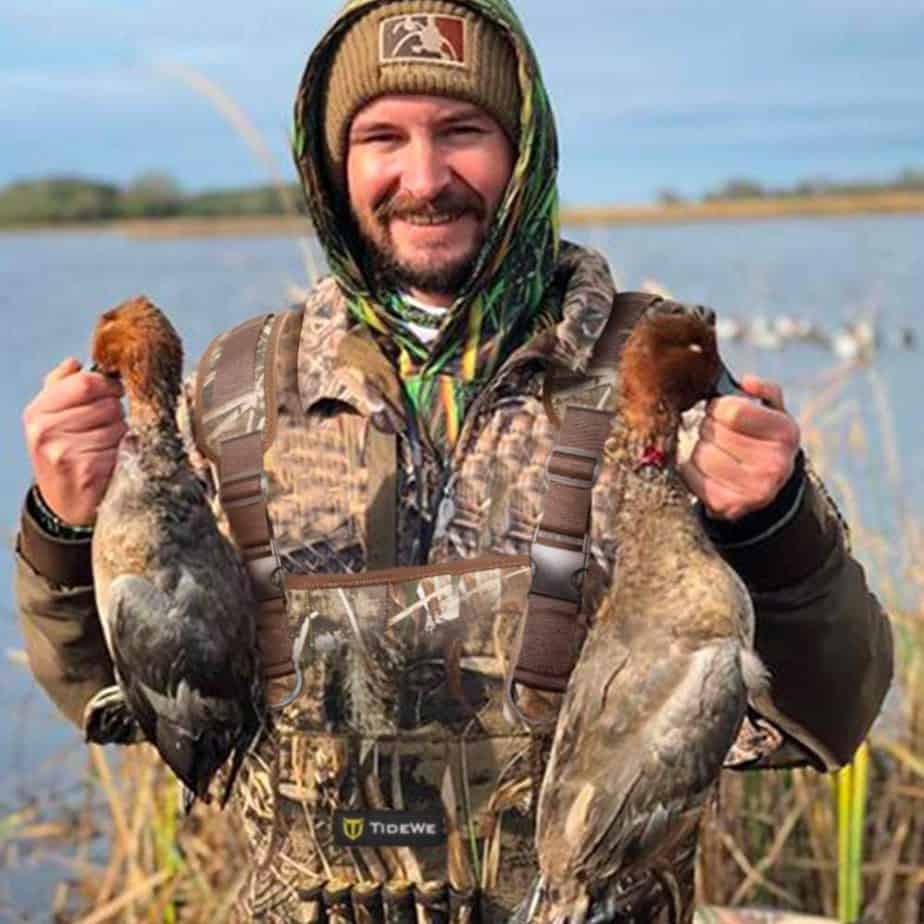
Chest waders are more appropriately named. They are basically a pair of overalls that cover you from toe to chest. Like overalls, they fasten with a pair of over the shoulder straps. They’ll often include a waist-strap to make layering easily and keep your range of motion free.
Chest waders are heavier, and not quite as mobile as hip waders, but provide much greater protection. If you’re going to be in deep or fast-moving water, chest waders are the choice for you.
Chest waders are also good for hunters who are going to be spending a longer amount of time in the water or may need to move around in the water more vigorously.
Waist-High Waders
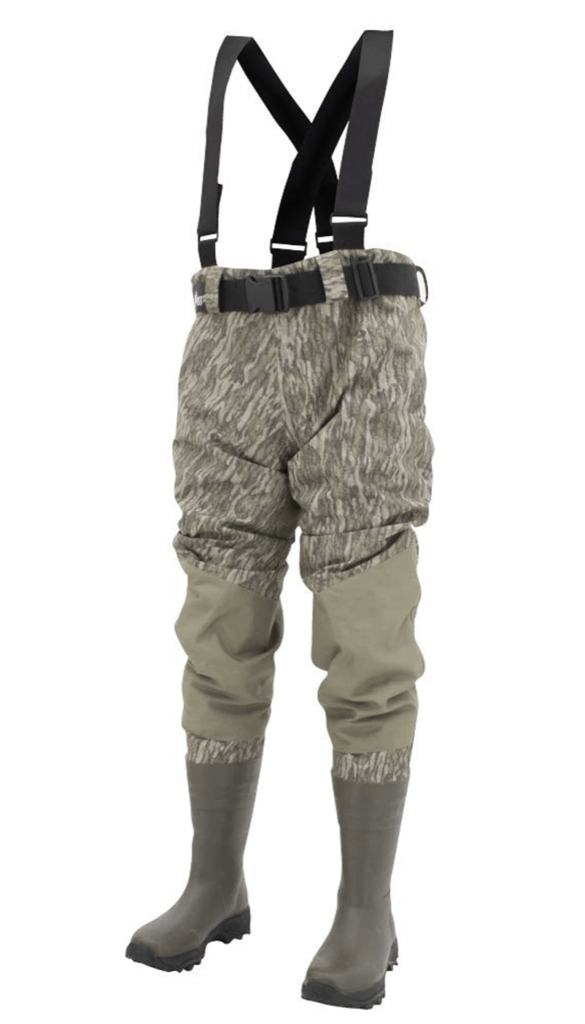
Waist-high waders strike a balance between hip and chest waders. They offer more mobility than chest waders, but more coverage then hip waders.
They can be fastened with a belt, or with a pair of suspenders, though a belt is more common.
Waist-high waders are best for waders who need to move quickly and frequently or cover larger distances, but still need more complete coverage than hip waders.
Boot Attachments
Hip, chest, and waist-high waders are available as either bootfoot or stockingfoot waders.
Bootfoot Waders
If you’re at all familiar with waders, these are probably what you’re picturing. They’re all one piece, from the sole of the boot to the top of the garment.
These are popular because they provide better insulation, and because most hunters typically only need one type of boot while they’re hunting.
Unless you have a specific reason not to, you should probably get a pair of bootfoot waders.
Bootfoot waders have two options for the soles, studded soles, or rubber soles. Studded soles are best for if you’re going to be dealing with a lot of slippery river rocks, but can wear down more quickly. Rubber soles are best for most other terrains, especially marshy conditions, but there’s nothing stopping you from using them on river rocks.
Stockingfoot Waders
Stockingfoot waders are similar to bootfoot waders in that they’re all one piece, from top to bottom. The difference is that where the bottom of bootfoot waders are boots, the bottom of stockingfoot waders are (wait for it) a waterproof stocking.
Their construction allows you to insert the foot of the wader, which is a waterproofed and often insulated stocking, into whichever pair of boots you choose for hunting. This can be an advantage if you need to wear your waders in multiple terrains that require different boots, or if you have other reasons to need a specialized boot.
Materials
Technically there are three materials that waders are made of, but only two of them are typically going to be suitable for hunting waders.
Neoprene
Neoprene is the most common option for modern waders. It provides an excellent combination of waterproofing, insulation, and durability. Neoprene can also be died, which means that if you’re using them for hunting you can add camo patterns.
With very few exceptions, neoprene is going to be your best choice.
Rubber
Rubber is an extremely durable, and extremely waterproof option for waders. Most waders will use some rubber elements in their construction, mostly the boots and soles.
However, rubber has pretty substantial limits on mobility, so you probably won’t find chest waders made entirely of rubber. It also doesn’t breathe well, so you could find yourself overheating in them, even in cold conditions.
Waterproofed Polyester or Nylon
These are a highly breathable, warm-weather solution, typically better for summertime anglers. They can be layered for colder conditions, but unless you spend a lot more time fishing than hunting, these probably aren’t a good option.
Do You Need Anything Else For Waders?
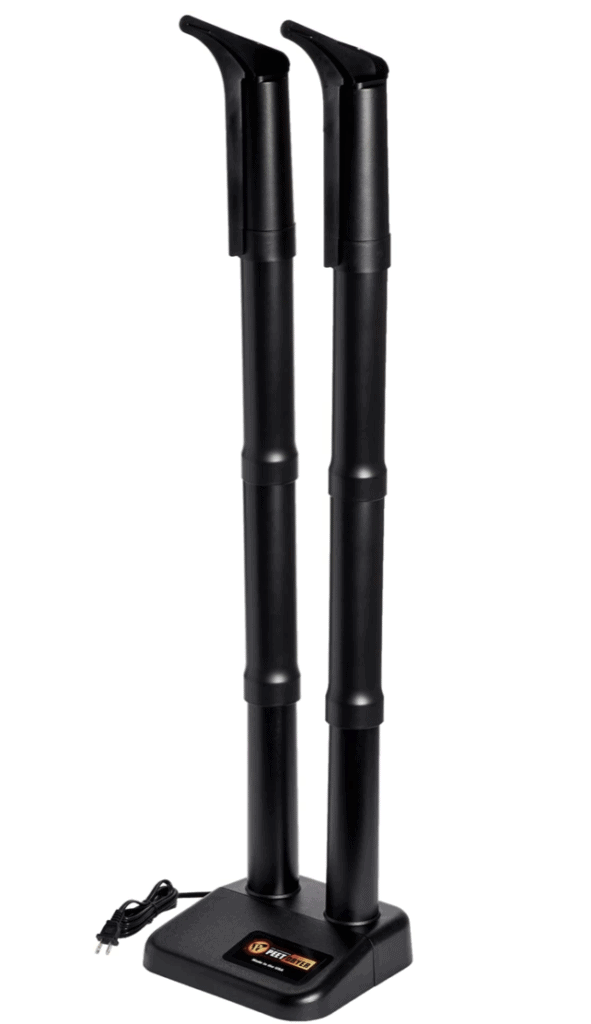
There are a few key accessories to purchase, in addition to the waders.
- Wader Dryer – Waders are meant to keep water out, but they’re almost as good at keeping water in. If water gets inside your waders, you’ll need a specialized dryer that goes all the way to the boots.
- Patch Kit – If your waders get damaged (and if you use them often, this should be when, not if) you’ll need to be able to repair them. Waders are an investment, and repairing them makes sure you get the most out of your investment.
- Wader Belt – Especially for hip and waist-high waders, a belt specifically designed to hold up waders is a must. It can be useful for chest waders, to help with layering and extra security.
What Do You Need To Know About Buying?
In addition to understanding the kind of waders you need for the specific type(s) of hunting you’ll be doing, there a few things you should look for when buying a pair of hunting waders.
The most important are the details. Especially check key areas where waders are most likely to fail.
- Check both the quality of the stitching, and the way it’s been sealed.
- The crotch seams should be especially well enforced.
- The place and method that the boots are attached, since this is where water is most likely to get in.
The other thing to know is sizing. Since waders are a combination boot, pant, and sometimes vest, getting the measurements correct is vital. If you’re going to be layering over or under your waders, you’ll need to pay even more attention to the size.
For this reason, you should buy your first pair of waders from a local pro shop. Experts there will be able to help with all these concerns.
In Conclusion
A good pair of hunting waders can make or break your hunting experience. Make sure you know exactly what you’ll be using them for, and make your decision accordingly.

